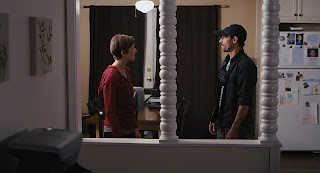TV Review - Amanda Knox
When it comes to true-crime documentaries, Netflix set the bar high with Making a Murderer. This movie about another true-crime doesn't come all that close. Its subject proclaims herself to be such an example of false convictions and the filmmakers do a good job of conveying how the legal system can go wrong by those involved and the media that covers it.
Directors Rod Blackhurst and Brian McGinn do manage to pull off a moment that's straight out an Errol Morris film. Aside from shooting the interviews like Morris did with the subjects looking directly into the camera, the subjects unknowingly hang themselves. Aside from Amanda Knox, the subjects include Guiliano Mignini, the lead prosecutor, and Nick Pisa, the freelance journalist who wrote for the British newspaper covering the story. Knox by the end is sanctified, but Mignini and Pisa come across as idiotically doing their jobs.
At times, Mignini and Pisa seem to have no self-awareness to the things they're saying. Of course, I viewed this through the prism of having seen Making a Murderer, so all of the criticisms of police and the media were already echoing in my head. When those criticisms pop up here, it's almost a comedic moment. It can be comedic here because there's less a mystery about the crime than in Making a Murderer.
The documentary opens with police video of the bloody crime scene, which still has the corpse lying exposed on the floor. However, half-way through the documentary, immense physical evidence and even testimony solve the case. A man named Rudy Guede is convicted of killing Meredith Kercher, an English girl studying abroad in her own bedroom.
Knox and her week-long, Italian boyfriend named Raffaele Sollecito were also put on trial for Kercher's murder. Knox was Kercher's roommate. Knox and Sollecito discovered the body the morning after. Despite Knox and Sollecito being each other's alibis, having spent the night and time of the murder at Sollecito's apartment, the police misinterpret information and all but coerce a confession.
What doesn't help is that the police confused or straight bungled the crime scene, mishandling and contaminating evidence that supposedly had trace amounts of Knox and Sollecito's DNA. The murder weapon for example was never found. The presumed weapon was basically falsified.
At the same time, there was also a rapid, news media that openly admits to running information regardless if it were true or not, only because it's salacious and it would sell papers, or get Internet traffic. The media just wants to get scoops with splashy headlines of sex and murder. Even when he knows he printed outright lies, Pisa doesn't apologize or even feel bad or responsible for his role in what becomes a witch-hunt of Knox. Mignini is at least somewhat contrite.
Three Stars out of Five.
Rated TV-MA.
Running Time: 1 hr. and 32 mins.
Directors Rod Blackhurst and Brian McGinn do manage to pull off a moment that's straight out an Errol Morris film. Aside from shooting the interviews like Morris did with the subjects looking directly into the camera, the subjects unknowingly hang themselves. Aside from Amanda Knox, the subjects include Guiliano Mignini, the lead prosecutor, and Nick Pisa, the freelance journalist who wrote for the British newspaper covering the story. Knox by the end is sanctified, but Mignini and Pisa come across as idiotically doing their jobs.
At times, Mignini and Pisa seem to have no self-awareness to the things they're saying. Of course, I viewed this through the prism of having seen Making a Murderer, so all of the criticisms of police and the media were already echoing in my head. When those criticisms pop up here, it's almost a comedic moment. It can be comedic here because there's less a mystery about the crime than in Making a Murderer.
The documentary opens with police video of the bloody crime scene, which still has the corpse lying exposed on the floor. However, half-way through the documentary, immense physical evidence and even testimony solve the case. A man named Rudy Guede is convicted of killing Meredith Kercher, an English girl studying abroad in her own bedroom.
Knox and her week-long, Italian boyfriend named Raffaele Sollecito were also put on trial for Kercher's murder. Knox was Kercher's roommate. Knox and Sollecito discovered the body the morning after. Despite Knox and Sollecito being each other's alibis, having spent the night and time of the murder at Sollecito's apartment, the police misinterpret information and all but coerce a confession.
What doesn't help is that the police confused or straight bungled the crime scene, mishandling and contaminating evidence that supposedly had trace amounts of Knox and Sollecito's DNA. The murder weapon for example was never found. The presumed weapon was basically falsified.
At the same time, there was also a rapid, news media that openly admits to running information regardless if it were true or not, only because it's salacious and it would sell papers, or get Internet traffic. The media just wants to get scoops with splashy headlines of sex and murder. Even when he knows he printed outright lies, Pisa doesn't apologize or even feel bad or responsible for his role in what becomes a witch-hunt of Knox. Mignini is at least somewhat contrite.
Three Stars out of Five.
Rated TV-MA.
Running Time: 1 hr. and 32 mins.











Comments
Post a Comment